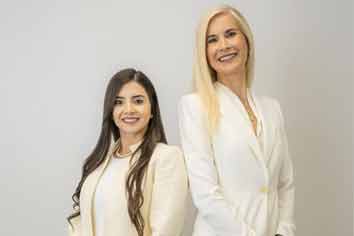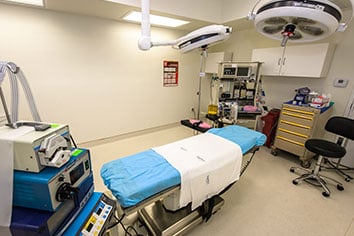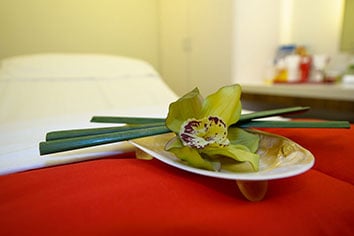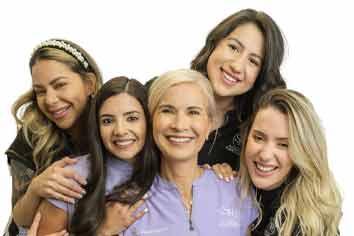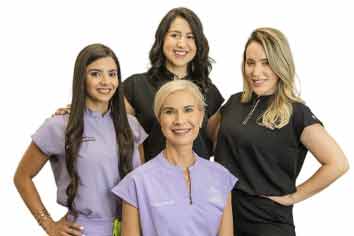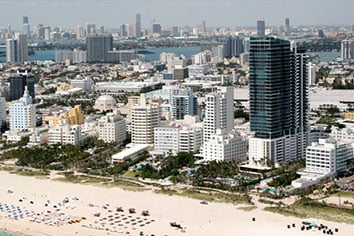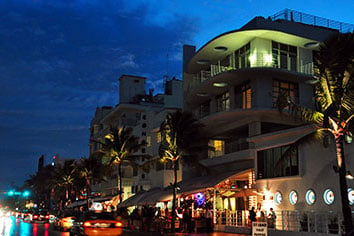First recognized by the World Health organization in 2016, breast implant-associated anaplastic large cell lymphoma (BIA-ALCL) is a cancer of the immune system. Though it isn’t breast cancer, it is a rare but serious type of non-Hodgkin’s lymphoma. It develops in the tissue that develops around an implant. Cells and fluid can accumulate, which thickens the scar capsule that surrounds it. This can cause a number of uncomfortable symptoms including changes in breast shape, pain, swollen lymph nodes, fever, and extreme fatigue.
Any illness is a concern, but BIA-ALCL requires specialized expertise. If it is diagnosed and treated quickly, most patients recover, as the condition develops slower than many other cancers. However, where BIA-ALCL is confirmed, the breast implants should be removed.
Dr. Silvia Rotemberg is a top female plastic surgeon in South Miami. She specializes in plastic surgery procedures and nonsurgical procedures for the face, body, and breasts. Providing safe, effective breast implant removal services for patients with BIA-ALCL and other breast implant-related illnesses, Dr. Rotemberg uses her expert knowledge and surgical skills to help her patients restore their health and confidence. Call (305) 539-7083 or fill out our online form to request a personal consultation with Dr. Rotemberg to discuss your needs.
About BIA-ALCL
BIA-ALCL is an exceedingly rare condition. Current research confirms over 800 cases and 33 deaths worldwide. (1) However, all women with breast implants should be aware of the telltale signs that something may not be right. It usually appears in one breast (unilaterally), but data shows that it can happen in both breasts (bilaterally). (2)
BIA-ALCL Symptoms
Symptoms of the condition may include:
/list
- Fluid collection in the breast
- A change in breast shape
- Breast enlargement
- Itching and redness
- Skin rash or lesions on or near the breast
- Enlarged lymph nodes
- Breast or armpit lumps
- Extreme fatigue (1)
BIA-ALCL and Capsular Contracture
BIA-ALCL is sometimes linked to another condition known as capsular contracture. In this condition, the body creates a hard capsule of scar tissue around the implant in a foreign body reaction. A fibrotic foreign body reaction is an inflammatory response that changes the structure of collagen fibers and the location of stem cells called fibroblasts in breast tissue. (3) The thickening of these fibers can cause rippling, irregular breast shape, and discomfort. Although not everyone who experiences capsular contracture has BIA-ALCL, it is important to seek a medical diagnosis swiftly if you suspect something is wrong.
Am I at risk for BIA-ALCL?
Although it is not common, BIA-ALCL is more likely to develop in certain circumstances. Texturing is present on the surface of some implants to aid implantation and provide a secure position. Compared to the smooth surface of other implants, micro-textured implants have a rougher outer surface. Some studies have highlighted that there is an increased risk of developing BIA-ALCL for certain patients as a result. Those at a higher risk include:
- Women who have had implants for 6 years or more
- Women with textured breast implants
- Women with a history of textured breast implants (1)
Screening for BIA-ALCL
Patients who suspect the presence of BIA-ALCL can ask their healthcare provider for a screening. This may involve a selection of tests including:
- Fluid Aspiration
- Ultrasound
- Cell Block Specimen Testing
- Biopsy
- Magnetic Resonance Imaging (MRI) (4)
Though there are many options, testing protocols for BIA-ALCL can vary depending on the patient’s circumstances. Be sure to ask your healthcare provider questions about testing if you have them.
Candidates for Breast Implant Removal
Breast implant removal is medically necessary in cases of BIA-ALCL. Your health is of paramount importance, so troublesome implants should be dealt with quickly. Therefore, if you have a diagnosis, and meet the necessary criteria for breast implant removal surgery, Dr. Rotemberg can help you promptly with your surgery planning.
Patient Choices
Your input is important in your treatment for BIA-ALCL. Many patients will have a team of specialists working to provide the most beneficial treatment for the condition. Some women who receive treatment for BIA-ALCL undergo reconstruction with smooth implants. While others opt for revision surgery through fat and tissue transfer. However, some patients may choose not to undergo additional reconstruction after their implants are removed.
To understand the expected risks and aesthetic effects of breast implant removal, and to discuss the next steps, we recommend scheduling an appointment for a personal consultation with Dr. Rotemberg.
Personal Consultation
Dr. Rotemberg uses a personal consultation with every patient to establish an effective treatment plan. At this time, she will ask you to provide some details including your medical history, the type of implant you have, how long ago your original procedure was, the symptoms you are experiencing, and your surgery preferences. She will also request the relevant information from the medical team treating your condition. After reviewing the information, Dr. Rotemberg will suggest the best treatment options for you, and schedule your procedure to remove the problem implants.
Preparation
It is vital to follow all pre- and post-operative directions exactly. Before your procedure, you will need to prepare in the following ways.
In the months before your breast implant removal procedure:
- If you’re a smoker, stop smoking at least 5 weeks before your surgery.
- Avoid taking NSAID-based pain relief medications and blood-thinning medications.
- Purchase a comfortable post-surgery bra.
In the days before your breast implant removal procedure:
- Arrange your transportation to and from our office, as you will not be able to drive.
- Arrange for a trusted person to stay with you in the first 24 hours after your surgery.
- Obtain the necessary prescriptions ahead of time.
The day before your procedure:
- Eat healthily and stay well hydrated
- Refrain from eating or drinking after midnight on the day before your surgery.
- Patients may drink clear liquids only the morning of treatment.
Implant Removal Procedure
On the day of your procedure, we will ask you to arrive without contact lenses, jewelry, or cosmetic products on your body. Please wear loose, comfortable clothing. Although it may be counterintuitive, we ask that you refrain from shaving your armpits or wearing deodorant.
Once anesthesia has been administered and you are under its effects, Dr. Rotemburg will follow the location of your initial surgery incisions and then carefully and strategically remove the breast implant within the capsule. She shapes the remaining tissue and contours it to preserve breast shape and reduce scarring.
Your breast implant removal procedure is unique to your needs. If your treatment plan involves the placement of new implants, she will place them in the existing breast pocket. After carefully suturing the area shut, we may use compression bandages to aid healing and limit swelling.
Recovery
Your recovery may involve other members of your medical care team, so please be sure to inform them of the details of your surgery and the medications prescribed. Dr. Rotemburg advises additional follow-up appointments after your breast implant removal procedure to assess your healing. Your post-operative instructions may vary depending on your treatment plan, but we generally advise sleeping on your back and continuing to wear a comfortable post-surgery bra and loose clothing. You may experience:
- Swelling
- Breast Tenderness
- Fluid Drainage
- Bruising
- Tingling/Sudden Pain
To manage discomfort, please take your prescribed medications as directed. Your symptoms will resolve after the first few weeks. Please take this time to rest well and refrain from strenuous exercise, driving, alcohol consumption, smoking, and intercourse until otherwise directed by Dr. Rotemberg.
Cost of Breast Implant Removal in South Miami
Patients with BIA-ALCL are not receiving treatment for cosmetic purposes. As implant removal is medically necessary, your procedure costs may be covered fully or partially by your health insurance provider. Be sure to speak to your health insurer regarding your individual coverage well ahead of your procedure.
Book a personal consultation with Dr. Rotemberg to discuss your breast implant removal procedure, and take another positive step toward recovery from BIA-ALCL. Call (305) 539-7083 to make an appointment, or fill out our inquiry form with your questions for further information.
FAQ
Is BIA-ALCL the same as breast cancer?
No. Although it is a type of cancer, it progresses and presents differently. BIA-ALCL is a type of non-Hodgkin’s lymphoma, or a cancer of the lymphatic system.
Is BIA-ALCL fatal?
BIA-ALCL is an incredibly rare disease that is linked strongly to textured implants. So far, over 800 cases have been reported worldwide with fewer than 50 deaths. Despite this, medical professionals urge women with textured implants or a history of textured implants to seek an assessment if they are experiencing any of the symptoms of BIA-ALCL.
What happens to my breast implants if I have BIA-ALCL?
The standard treatment route for patients with a BIA-ALCL diagnosis is implant removal.
References
- Yoo, H., Park, J.-U., & Chang, H. (2022). Comprehensive Evaluation of the Current Knowledge on Breast Implant Associated-Anaplastic Large Cell Lymphoma. Archives of Plastic Surgery, 49(02), 141–149. https://doi.org/10.1055/s-0042-1744422
- Clemens, M. W., DeCoster, R. C., Fairchild, B., Bessonov, A. A., & Santanelli di Pompeo, F. (2019). Finding Consensus After Two Decades of Breast Implant-Associated Anaplastic Large Cell Lymphoma. Seminars in Plastic Surgery, 33(04), 270–278. https://doi.org/10.1055/s-0039-1696998
- Headon, H., Kasem, A., & Mokbel, K. (2015). Capsular Contracture after Breast Augmentation: An Update for Clinical Practice. Archives of Plastic Surgery, 42(5), 532. https://doi.org/10.5999/aps.2015.42.5.532
- Jaffe, E. S., Ashar, B. S., Clemens, M. W., Feldman, A. L., Gaulard, P., Miranda, R. N., Sohani, A. R., Stenzel, T., & Yoon, S. W. (2020). Best Practices Guideline for the Pathologic Diagnosis of Breast Implant–Associated Anaplastic Large-Cell Lymphoma. Journal of Clinical Oncology, 38(10), 1102–1111. https://doi.org/10.1200/JCO.19.02778






